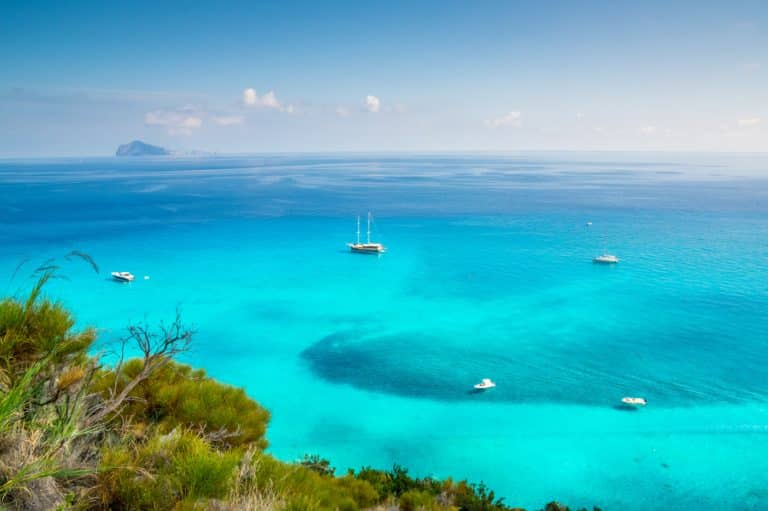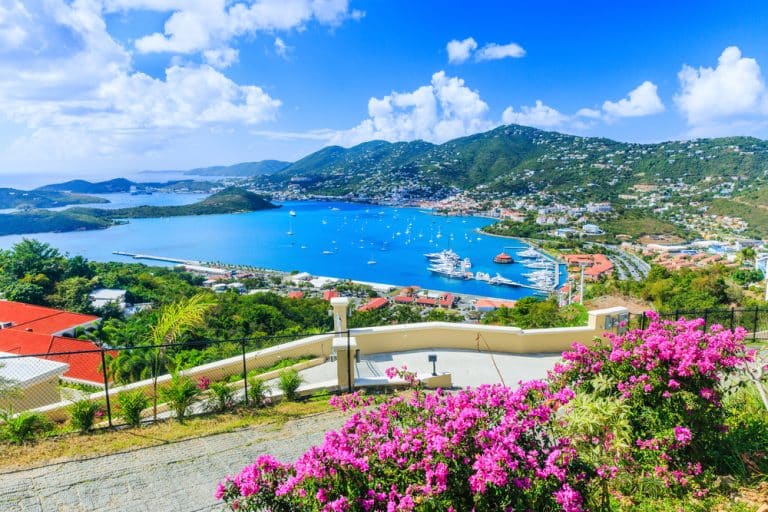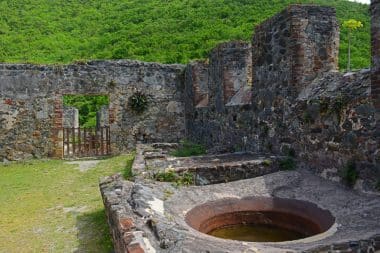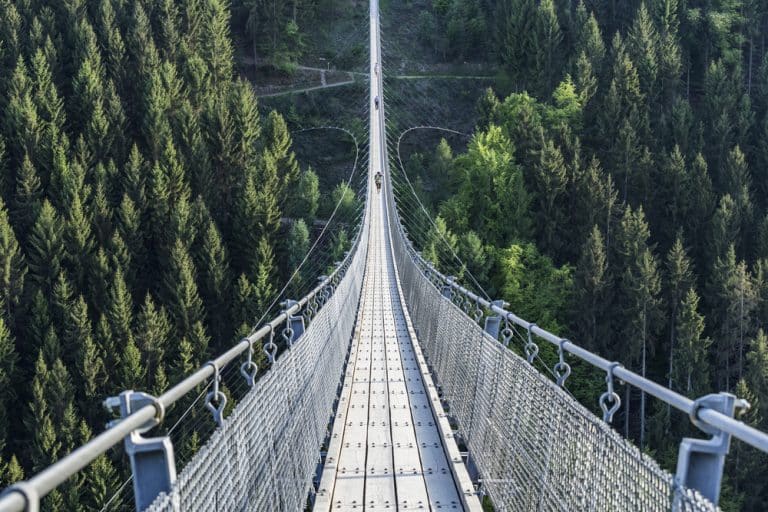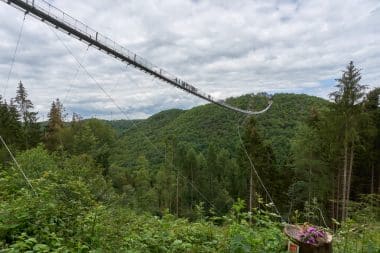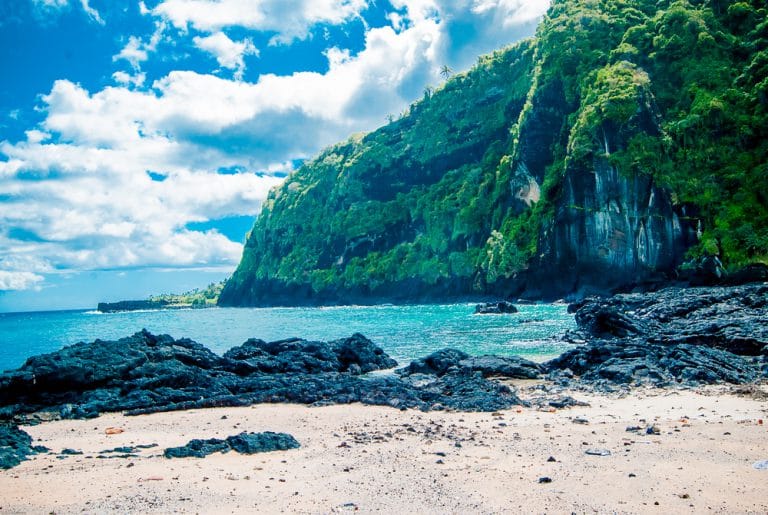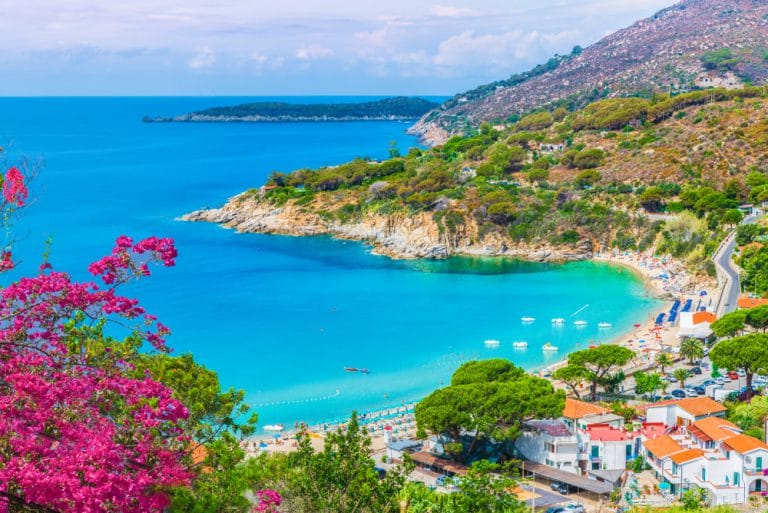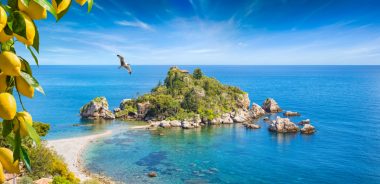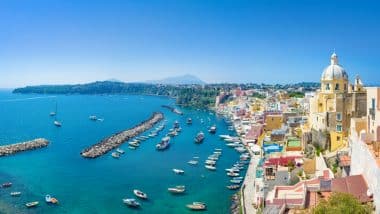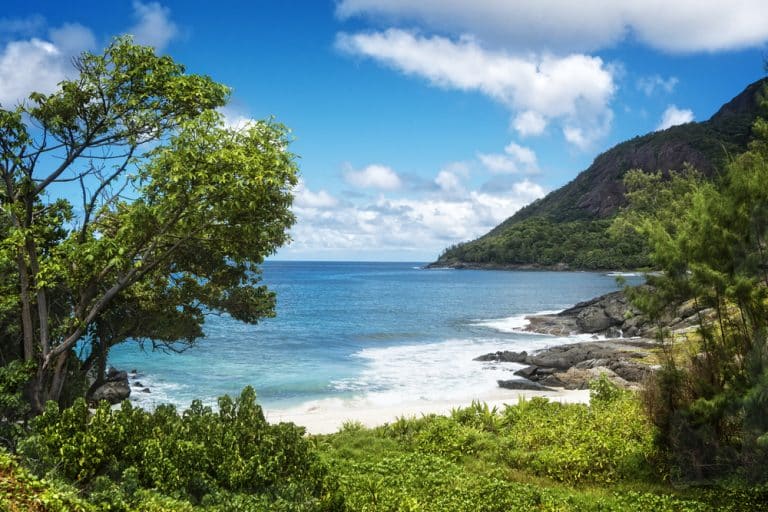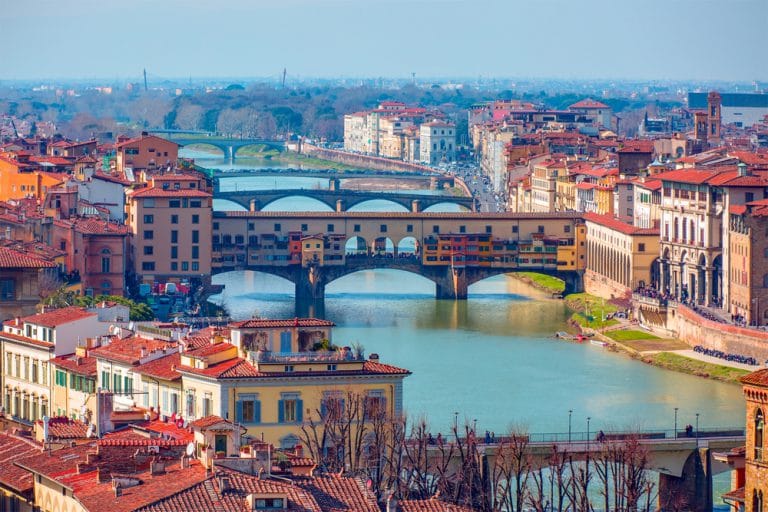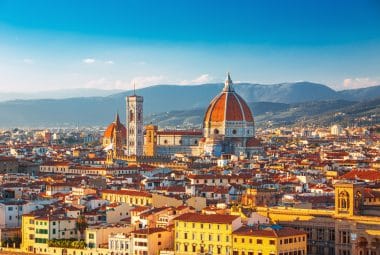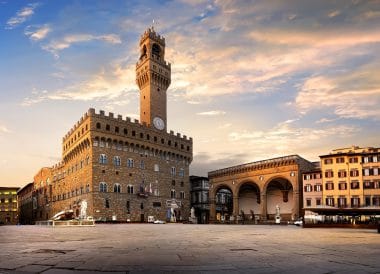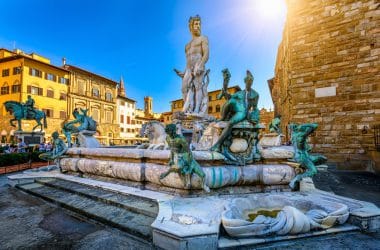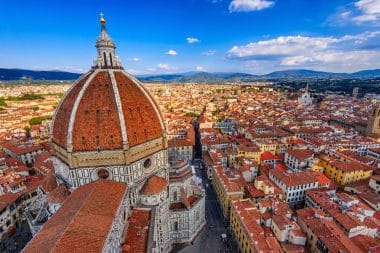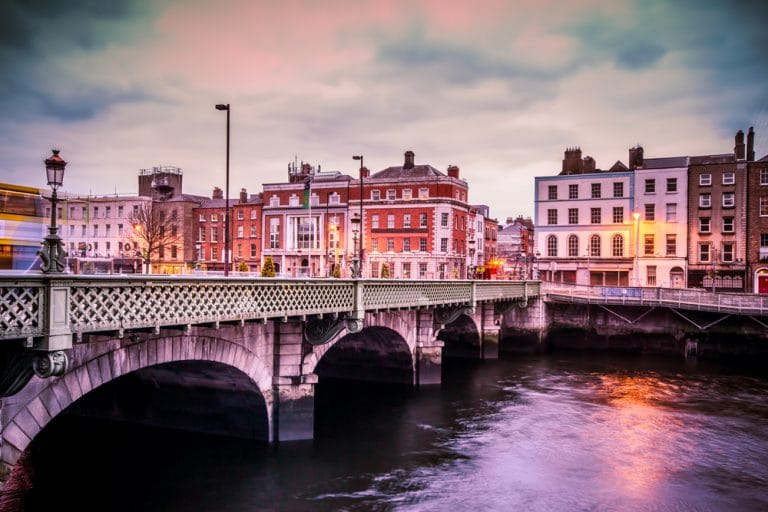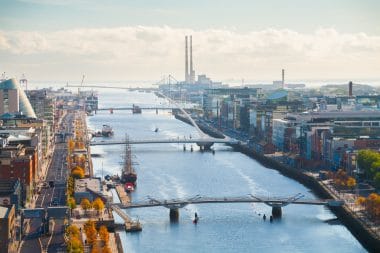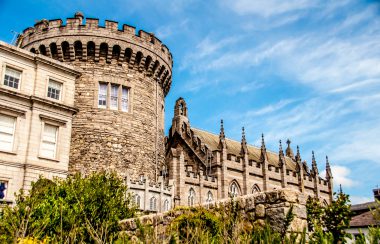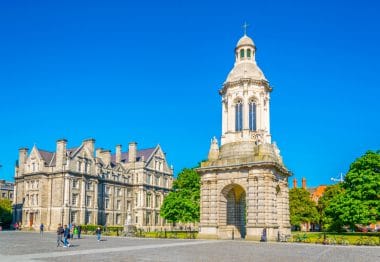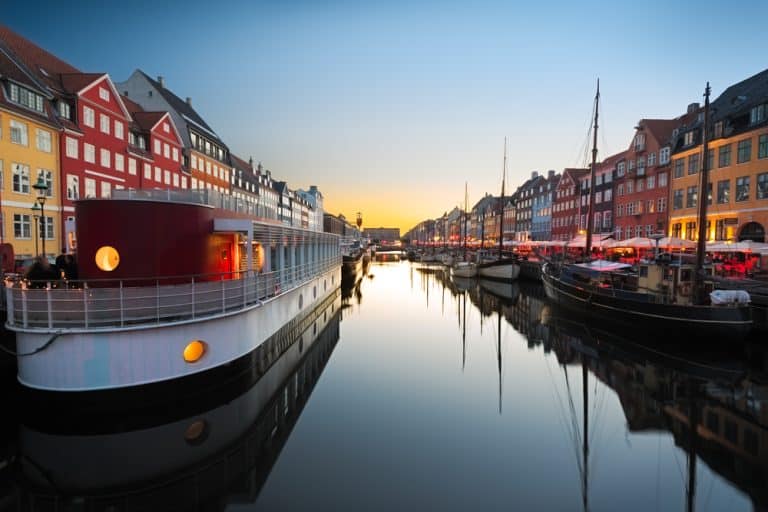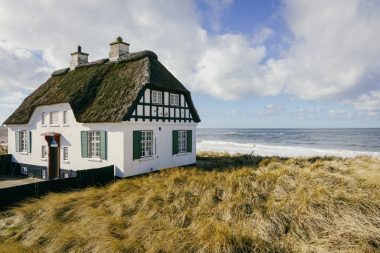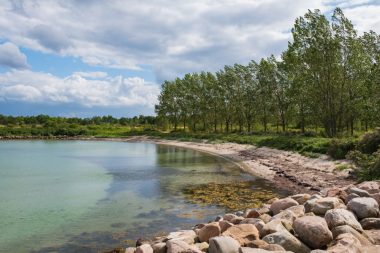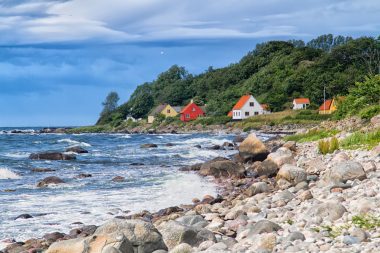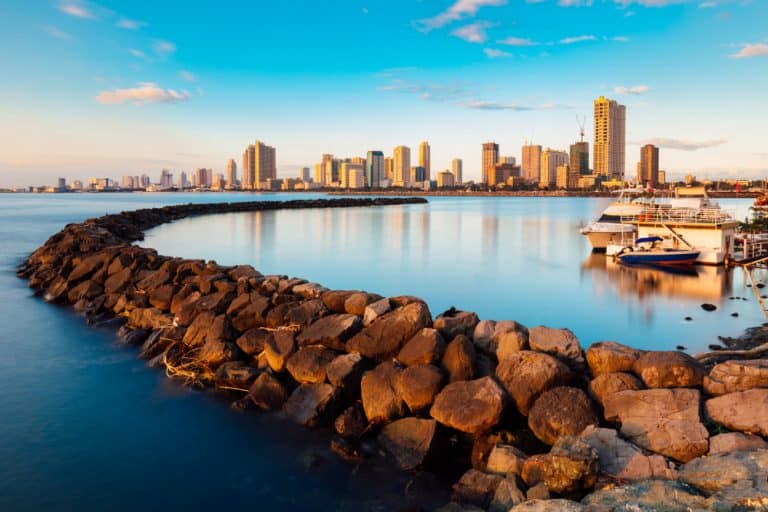Black sand, turquoise blue sea and volcanic landscapes
The Aeolian Islands, also known as the Aeolian Islands, are located between 30 kilometers and 80 kilometers north of Sicily in the Tyrrhenian Sea and are a group of islands consisting of a total of seven islands. They are spread over an area of over 115 square kilometers and have almost 14,000 inhabitants. Since the islands are of volcanic origin and the landscape is therefore particularly impressive, they were declared a UNESCO World Heritage Site in 2000. Here, holidaymakers will find impressive volcanic landscapes as well as beautiful beaches with black sand and crystal clear waters.
Lipari
A particularly beautiful beach on Lipari is the “white beach” called “Spiaggia Acquacalda” in the very north of the island. The beach is extremely spacious, so that every bather has his peace and quiet while sunbathing and swimming. The water is clear, which provides ideal conditions for snorkeling, and suddenly becomes deep after just a few steps into it. The beach offers a unique view of the islands of Salina, Panarea and Stromboli. The “Spiaggia Valle Muria” in the northwest of the island is also a popular beach section. The pebble beach is rather narrow, but has its own charm. The black sand is particularly fascinating for holidaymakers and there are also some caves to discover here. Since there are no shaded sunbathing areas, you can rent umbrellas (and deck chairs). There is also plenty of cool drinks on this beach. The curious can try snorkeling and see the extraordinary marine flora and fauna up close. Another beach is the “Spiaggia di Canneto” near the town of the same name. It is framed by a bay and thus offers an impressive panorama. The beach is extremely clean, the water crystal clear and always well attended. The beach has bars and clubs, so that the physical well-being is sufficiently taken care of.
- Canneto Beach: A popular pebble beach on the east coast of the island of Lipari, easily accessible by bus from Lipari town.
The beach offers crystal clear waters and a variety of amenities such as restaurants and cafes. - Spiaggia Bianca: Famous for its white pumice stone, which gives the water a special turquoise color.
The beach is a bit secluded, but can be reached by boat or a long walk. - Porticello: A quieter beach, ideal for those who want to get away from the hustle and bustle.
It also offers white pumice and clear water.
Salina
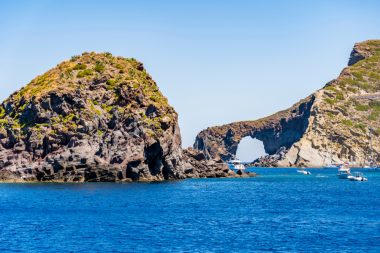
- Santa Marina: A small pebble beach near the port of Santa Marina Salina.
It is easily accessible and offers a beautiful view of the surrounding islands. - Pollara Beach: Famous by the movie “Il Postino”, this beach is known for its spectacular backdrop of cliffs and turquoise waters.
Access is a bit more difficult, but worth it.
Alicudi and Filicudi
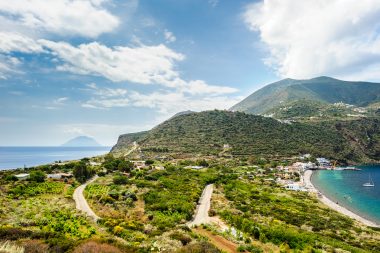
- Le Punte: A rocky beach with crystal clear waters, ideal for snorkeling and diving.
The area is less touristy and offers a quiet atmosphere. - Capo Graziano: Another rocky beach, known for its archaeological sites nearby.
The water is clear and perfect for swimming and snorkeling. - Bazzina: A secluded beach on the east side of the island of Alicudi, which is characterized by its tranquility and seclusion.
Ideal for a relaxing day by the sea.
Vulcano
The entire island of Vulcano, which is the southernmost, is surrounded by crystal clear waters, providing the best conditions for snorkeling and diving. Fumarole Beach is particularly popular due to the underwater springs that wonderfully warm the sea at this point. Here, swimming becomes a unique experience and you also have a magnificent view of the wide, blue sea. The beach is most used by families with children, as it is very extensive and offers numerous services. The two beaches to the south, “Spiaggia Punta dell’Asino” and “Spiaggia del Gelso”, are also popular, as the contrast between black beach and blue water is simply incredibly fascinating.
- Spiaggia delle Sabbie Nere: A unique black sand beach created due to the volcanic origin of the island.
The water is warm and the surroundings spectacular, with views of the active volcano. - Spiaggia di Gelso: A less crowded but beautiful black sand beach in the south of the island, ideal for a quiet day by the sea.
Stromboli
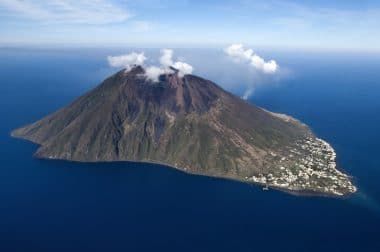
- Spiaggia di Ficogrande: A popular black sand beach on the east side of the island, overlooking the active volcano Stromboli.
The beach offers good facilities and is an ideal starting point for volcano hikes. - Spiaggia Lunga: A long, black sand beach, ideal for long walks and quiet hours by the sea.
The beach is less busy and offers stunning views of the volcano.
Panarea
The smallest of the Aeolian Islands is Panarea. It has a few beaches, but most of them can only be reached by boat. The two bays “Cala Junco”, which looks like an amphitheatre, and “Cala degli Zimmari” can be reached from the mainland and are very popular with tourists. The latter is also known as the “red beach” due to its soil color.
- Cala Junco: One of the most picturesque beaches in the Aeolian Islands, located in a small bay with crystal clear waters and surrounded by rocks.
Access is via a hiking trail. - Zimmari Beach: A sandy and quiet beach in the south of the island.
It is ideal for families and offers shallow, clear water.


